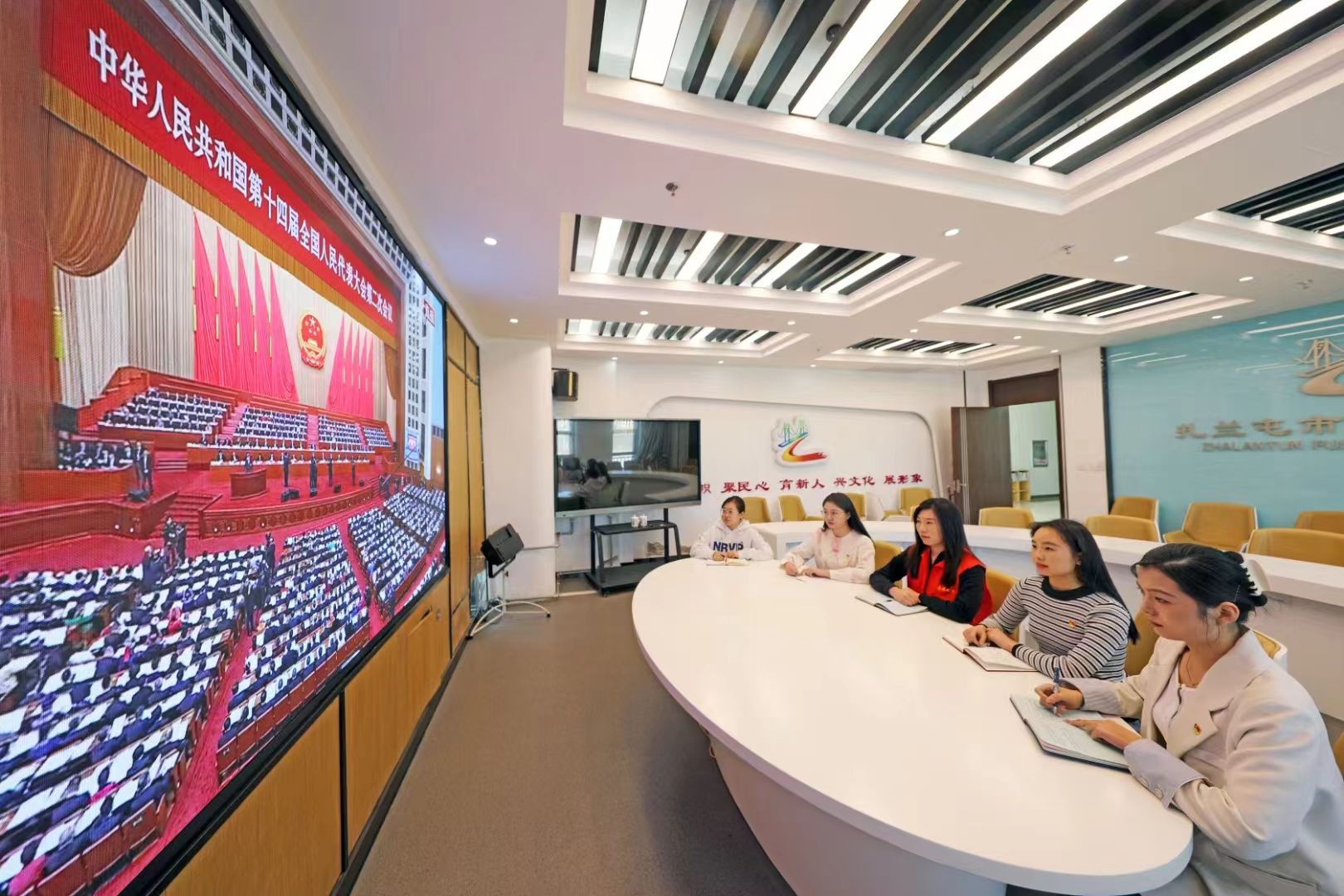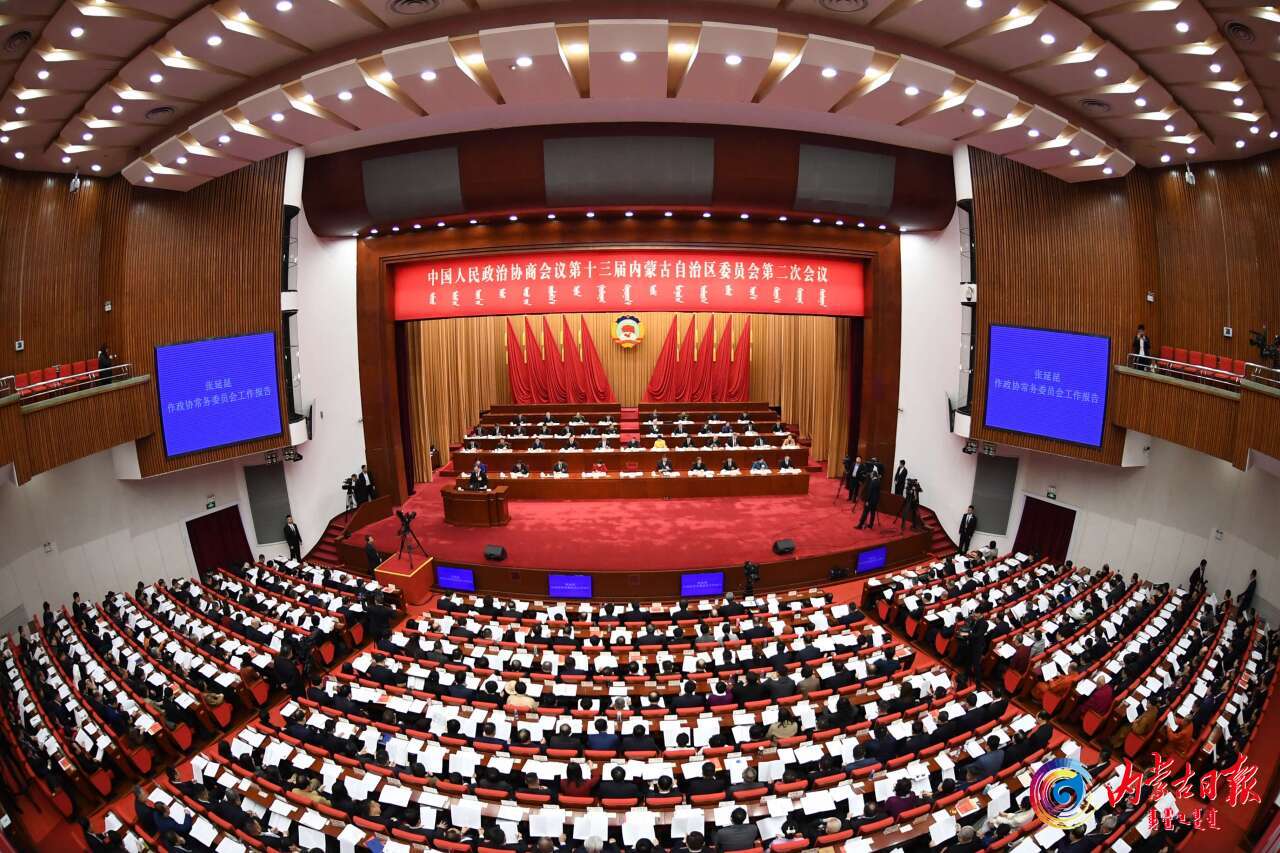Herding makes strides on steppes
Vast stretches of land along Inner Mongolia's Expressway 216 lie uninhabited. More animals than people can be found in this part of the autonomous region, where trucks carrying coal are often the only vehicles to be seen on the highway connecting urban Ordos to its rural Otog Front Banner, or administrative subdivision.
Other than coal - its reserves are among the world's largest - the region produces mutton, milk and cashmere. It has iron ore and rare earth and, among more modern industries, wind and solar power. Lately, it has also gotten into data mining.
Local herders and officials in two villages of the Otog Front Banner say that modernization of livestock production and management is underway. Traditional lifestyles of the once-nomadic people are changing.
The prefecture-level city of Ordos, located in the region's south, has an area of more than 85,000 square kilometers but a population of just 2 million or so. With a dominant Han population and around 11 percent Mongolian, the ethnic mix includes Manchu and Hui groups.
Ethnic Mongolians account for 30 percent of the banner's population of 78,000, with the majority estimated to be involved in raising livestock and agricultural activities. The banner, which was established in 1980, has 68 villages and four towns.
More than 2 million domestic animals, mostly sheep, are raised each year, according to local government officials.
The outside world has long associated Inner Mongolia with images of wild horses running through the grasslands. But horse racing, the popular sport in the region, today appears to be more relevant to the tourism industry than to society.
The banner had 2,913 horses in 2016, compared with more than 2 million in the region in 1975. However, the annual Naadam festival has kept Inner Mongolia's equestrian tradition alive.
A similar story is that of yurts, the tent dwellings that used to be made from a woolen fabric and wood. Many years ago, nomadic groups in the region would dismantle them and carry the parts from place to place as they explored the steppe.
Present-day yurts in the banner have concrete bases and serve as accommodations in summer where visitors experience Mongolian culture.
It is late afternoon in Tabantaolegai village when Wangchuge - some ethnic Mongolians use single names when translating into English - decides to survey the grounds on which his sheep are grazing. But instead of walking through sandy fields to gather the animals from different corners, he monitors them on a TV screen from inside a modern yurt.
The herder, who runs a family business raising sheep for meat and wool, says he sells an average of 300 sheep a year.
The video cameras he has placed on the roof of his house provide him with real-time footage of animal movements on his plot of land, which is large.
A phone app gives further assistance.
"Traditional ways of raising sheep have disappeared" in his village, says Wangchuge, 41, as he slices salted mutton, a Mongolian delicacy.
"The use of technology has helped me reduce both labor and time."
He owns six cows as well, but mainly for milk.
This village in the Otog Front Banner has 175 permanent resident families, many of whom keep sheep and grow corn and a special variety of rice.
Wangchuge says that somewhere on his farm he has set up containers with drinking water for his sheep that automatically adjust the temperature.
He is eager to develop a new type of earmark for his animals but doesn't say if it will be digital.
"After a sheep is born and earmarked, we will be able to keep a daily log of its intake of grass and water. This will make consumers feel safe about buying the meat," he says.
The banner is among 33 such administrative subdivisions in Inner Mongolia where livestock production is a major economic activity.
"We are trying to develop modern animal husbandry and agriculture that are both eco-friendly and profitable," says a senior local official, who asks not to be identified by name, since he is speaking on behalf of his team. He adds that the industries made 2.2 billion yuan ($345 million; 280 million euros; £245 million) in 2016.
An ecological concern has been the degradation of the grasslands, partly owing to overgrazing.
In 2013, the region launched protection measures and has since restricted active grazing to nine months a year.
Bixiriletu, a 40-year-old herder from Angsu, another village in the Otog Front Banner, grew up watching his parents herd their sheep to grasslands far from home. In the past few years, he has had to wake up nightly to check on the animals.
He now has tools for the job - a camera and a smartphone.
Bixiriletu has worked at a coal mine in the banner for much of his adult life. In 2012, he watched a TV program on artificial insemination of sheep. He says it gave him the idea of visiting a breeding facility in Ulanqab, which is also located in the region's south.
"The (sperm) donors are foreign," he says of the meat-producing Dorper, the South African hybrid sheep that was developed for arid conditions similar to Ordos.
The mixing of foreign and local breeds, Bixiriletu says, has meant shorter growth periods.
"It takes from six to seven months for the the meat-producing Dorper, the South African hybrid sheep that was developed for arid conditions similar to Ordos.
The mixing of foreign and local breeds, Bixiriletu says, has meant shorter growth periods.
"It takes from six to seven months for the local sheep to be ready for an abattoir (slaughterhouse), but for the hybrids, it's from four to five months."
Around 200 families live in Angsu. In the 1990s, Mengkebayaer, who is from the village, was a musician with a Mongolian folk troupe in Dalian, in Northeast China's Liaoning province. He got married and returned to Inner Mongolia in 2000, when his village didn't even have electricity.
His many siblings gave him 40 sheep to start his livestock business, and soon he saw profits start to roll in, he says.
His parents had settled down in Angsu in the 1940s, the same decade the autonomous region came into being.
"When I got married, I couldn't have imagined that my village would have electricity. Then we got it, then we got roads, and now online connectivity," says Mengkebayaer, 44.
The first light bulbs were lit in Angsu in 2006.
Mengkebayaer makes about 400,000 yuan a year from his various businesses, which include livestock, dairy items, selling corn and rice, and tourism.
"Irrigation can be controlled remotely," he says of the overhead water pipes installed on farmlands in the banner.
He aims to register a trademark to sell his products online. Meanwhile, he plays the shudraga, a Mongolian instrument, when he has the time.
More than a decade ago, Angsu also witnessed the arrival of seed-sowing machines. The village's Party chief, Suyalaqiqige, was among the early adopters, using the machines to plant corn and rice. She had been a traditional sheep herder in her teens.
While modernization of livestock management and agriculture has made her life easier, it has also led to the loss of human interaction, such as conversations with fellow herders while watching their sheep graze. Nonetheless, the old grazing method was time-consuming.
Sitting in her house underneath a portrait of Genghis Khan, the founder of the Mongol Empire and the most revered figure in the ethnic Mongolian community in China, Suyalaqiqige says that, as she sees it, the biggest change in her village has been the mechanization of agriculture.
As a delegate to the Ordos People's Congress since 2013, her role includes helping local herders get better access to public services and promoting government policy. But despite her village's strides in modernization, she recognizes that some challenges remain.
"There are asphalt roads connecting villages (in the larger area) but not (connecting) all herders' families. If this is solved, it will be more convenient for them to travel and sell their products outside," says Suyalaqiqige, 51, speaking through a translator.
Many villagers hire trucks to transport goods to markets, and at times buyers come to the village, too.
Other than infrastructure and transportation requirements, protecting the grasslands is a priority.
Local herders have started to divide plots for their sheep to graze, and the emphasis is on quality breeds so that numbers can be reduced, she says.
Most of the herders interviewed in the Otog Front Banner come from families that once led nomadic lives.
Now, even as the present generations welcome changes in their work and lifestyle, they are still likely to continue to pursue their cultural traditions.
Lin Hong contributed to this story.
satarupa@chinadaily.com.cn
(China Daily European Weekly 03/30/2018 page16)



 Print
Print Mail
Mail





